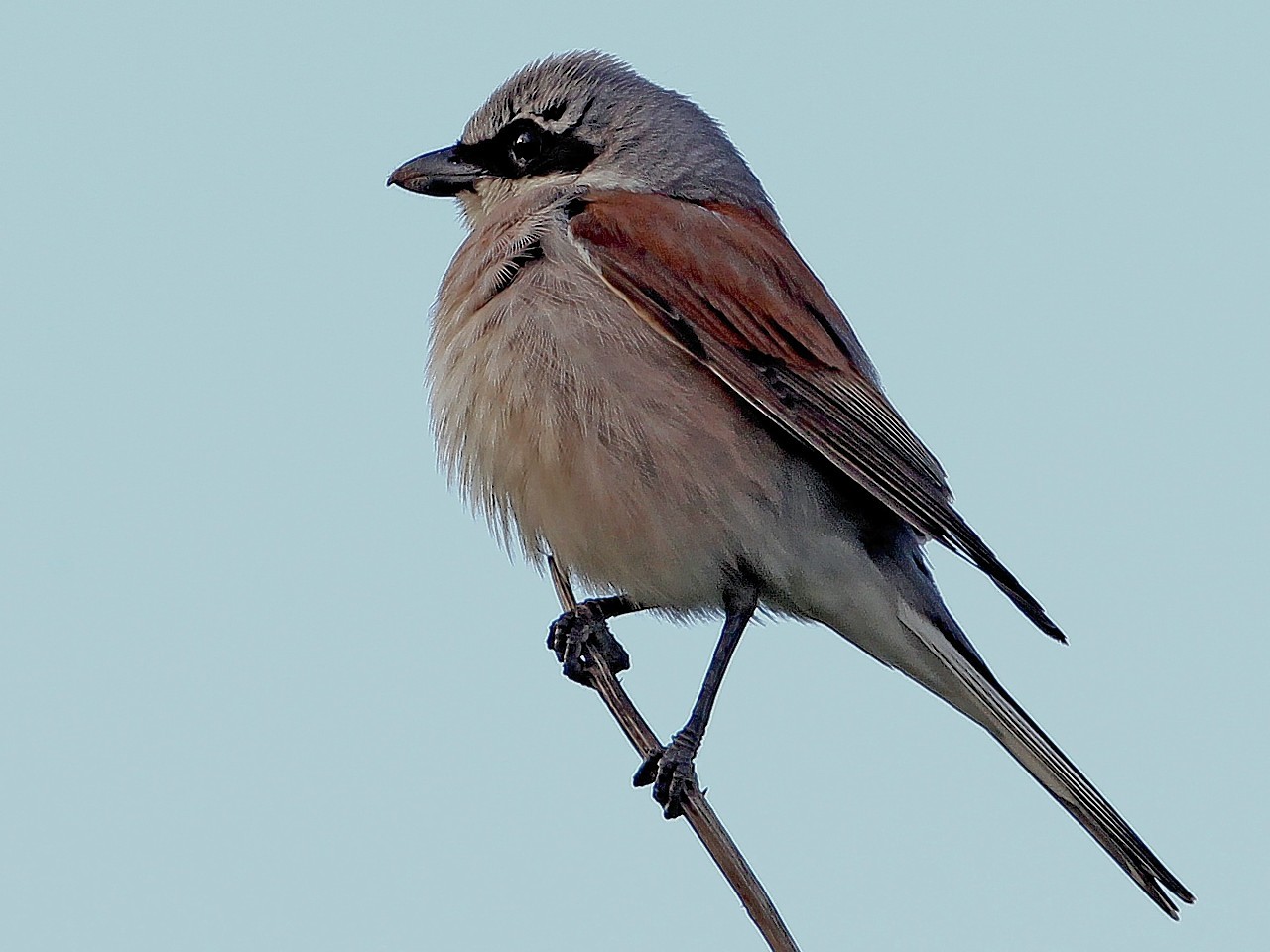A rare bird once driven to extinction in Britain has successfully produced four chicks at a secret Scottish site.
A pair of red-backed shrikes – nicknamed the ‘butcher bird’ because it impales prey on thorns or barbed wire – raised four fledglings in a garden on Shetland.
Ornithologists are keeping the exact location secret to protect the shrikes, the only pair to breed in the UK this year.
Shetland birdwatcher and photographer Jim Nicolson said the birds would have been on their way to Scandinavian breeding grounds when they made their unscheduled stop.
He said: ‘They obviously crossed paths and decided they were for one another. The conditions must have been to their liking and they obviously found plenty of food. The nest was in among really good gardens with plenty of flowers and shrubs.
‘We had a poorish spring, but things slightly improved and that probably brought the insects out. And the householder didn’t want anyone disturbing them. Everything just came together. They are mega-rare.’
The birds, which are slightly bigger than a house sparrow, were nesting in a shrub among a strip of houses in a side road on the Shetland mainland when sharp-eyed Mr Nicolson spotted the striking male, with his black mask, powder-blue head and shell-pink underside, close by.
A sighting of the pair was recorded the following day and wildlife experts established there was a nest. Four chicks have now successfully fledged.
Stuart Benn of the RSPB said: ‘It’s a very, very rare breeding bird with less than half a dozen pairs in the UK.
‘If you saw one on its migration you’d call it a good day. To have them nesting and breeding is even better. It’s very exciting.’
Red-backed shrikes are migrants who return from Africa in spring.
They are also known as “butcher birds” due to their habit of impaling small creatures and insects on sharp thorns or barbed wire.
These bird larders can hold caterpillars, beetles, bees, lizards and even small mammals such as mice.
The shrike perches on the end of a branch looking for prey before dropping to catch it in a sudden flurry on the ground.
Once a familiar breeding bird across the country, they declined to extinction after breeding in East Anglia in 1992.
The reasons for the decline are believed to include changes in farming and loss of habitat.
Red-backed shrikes returned to Dartmoor in 2010, where they have since bred sporadically. However none bred there this year.
ends
